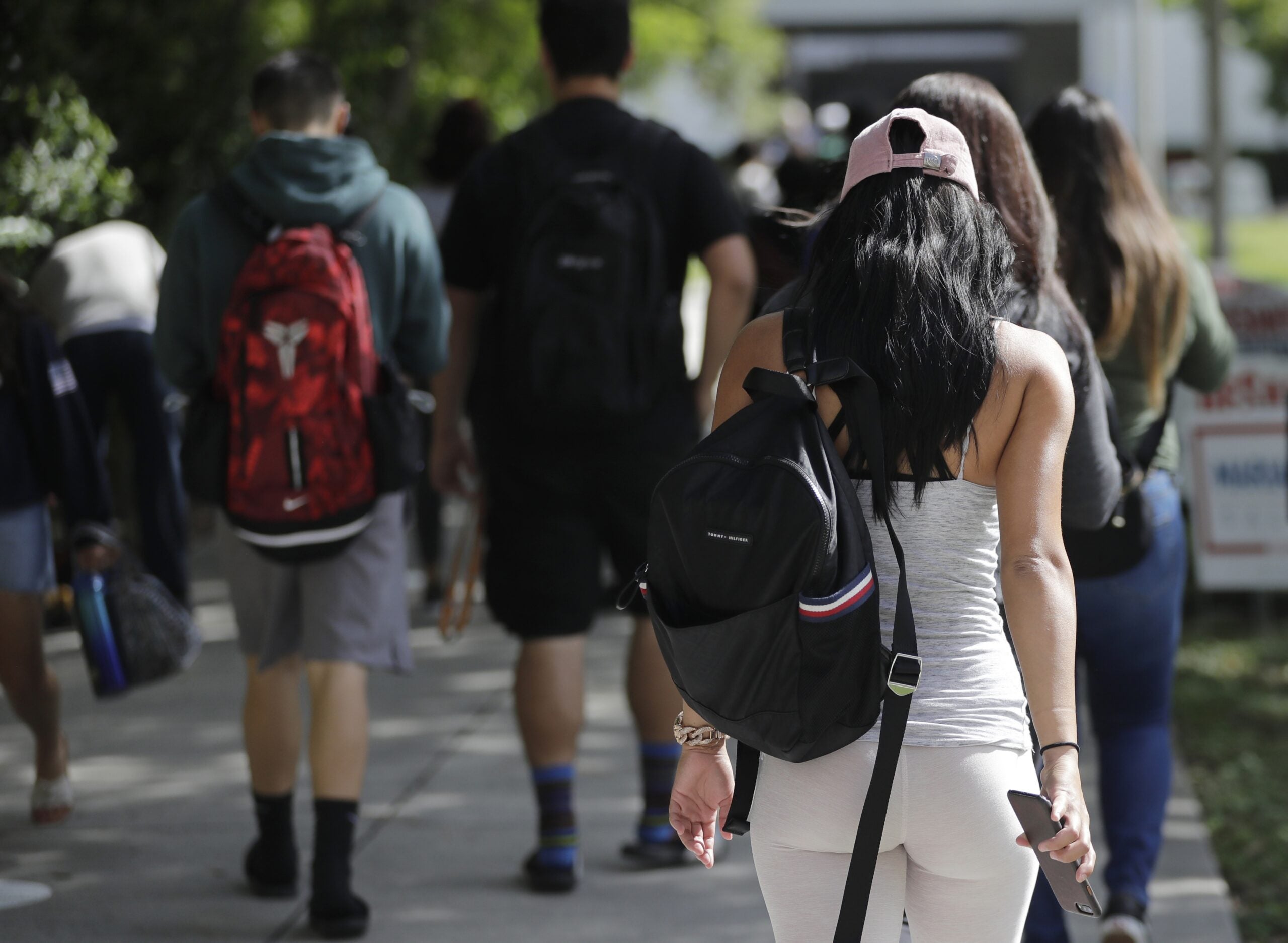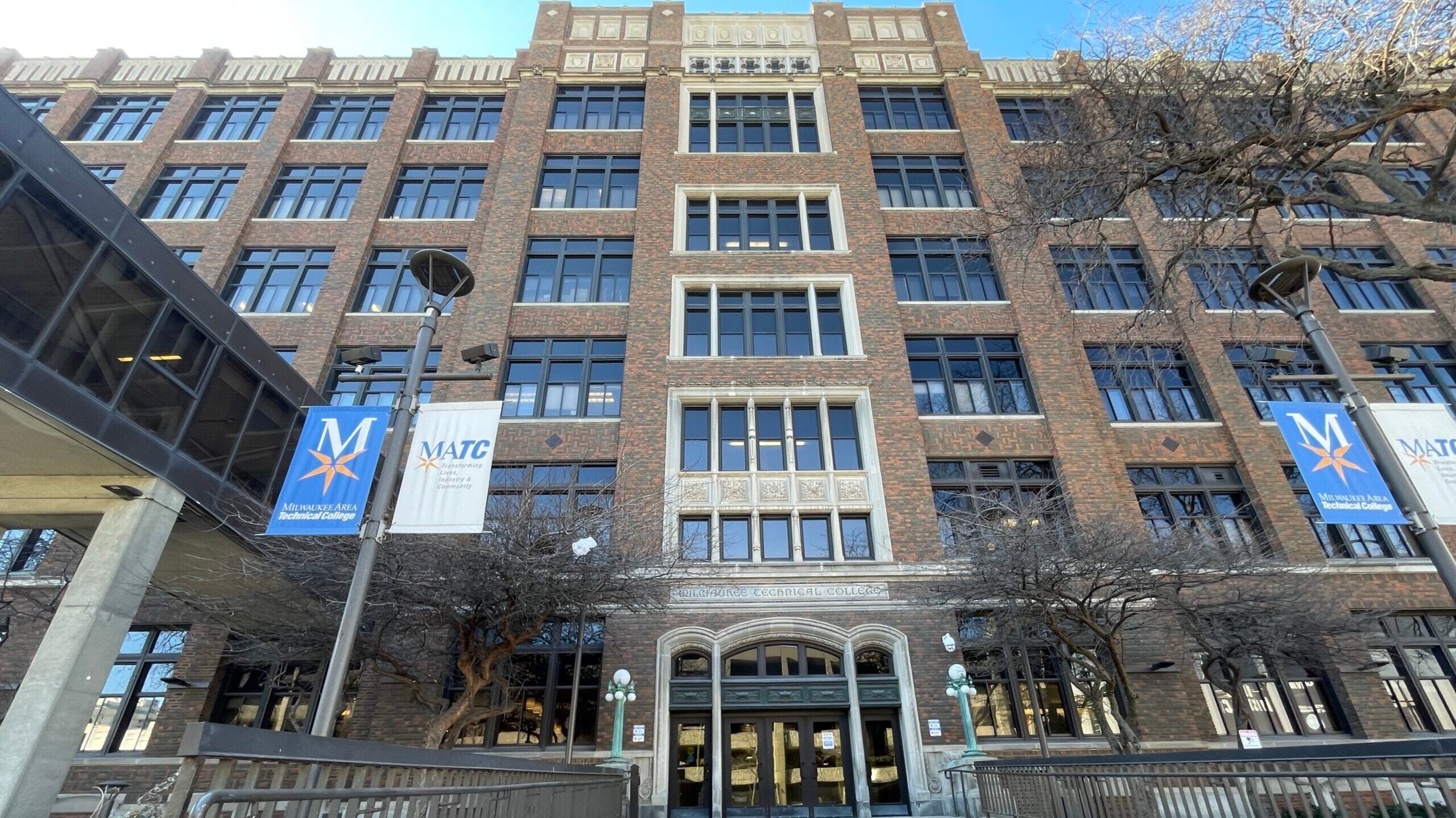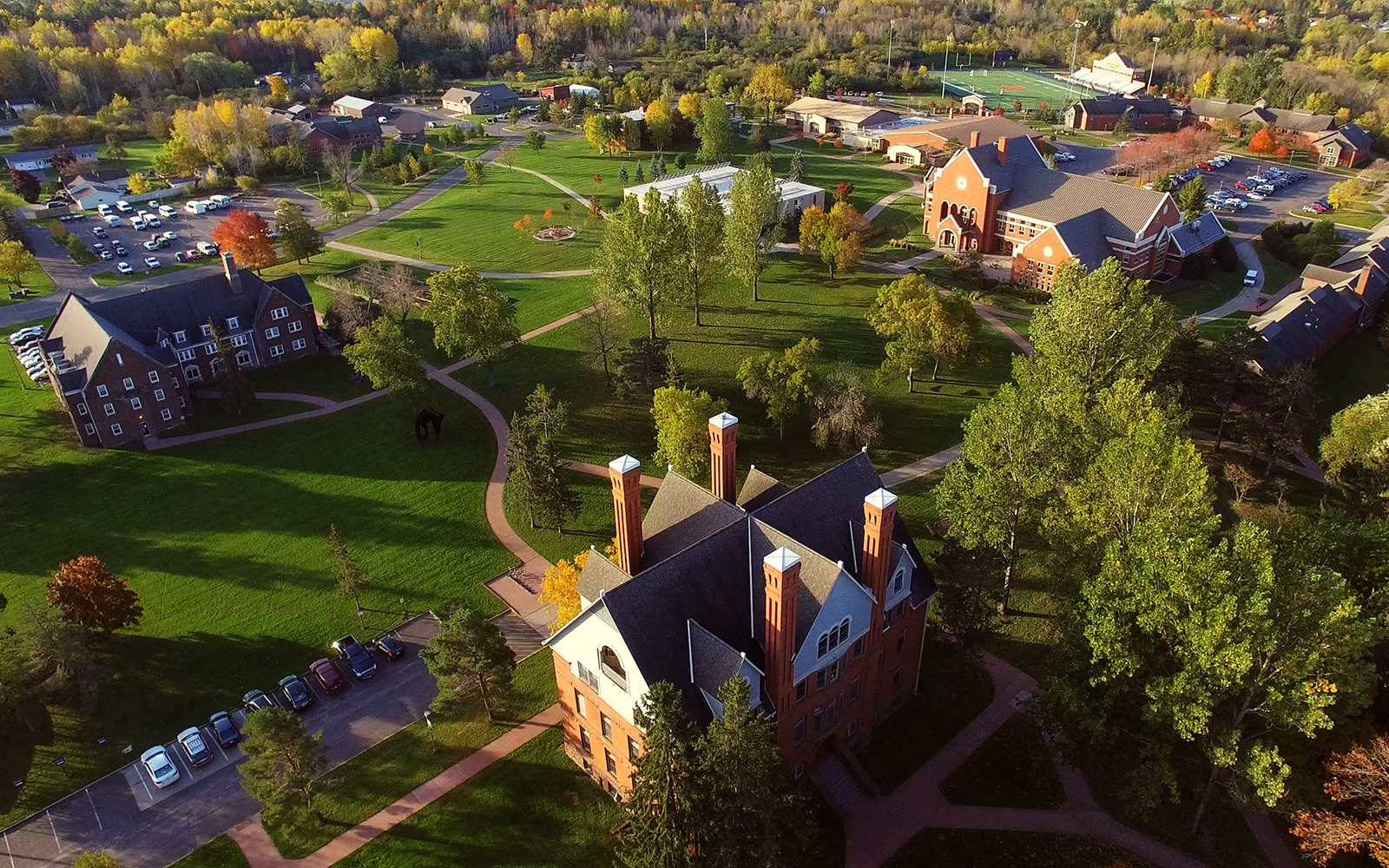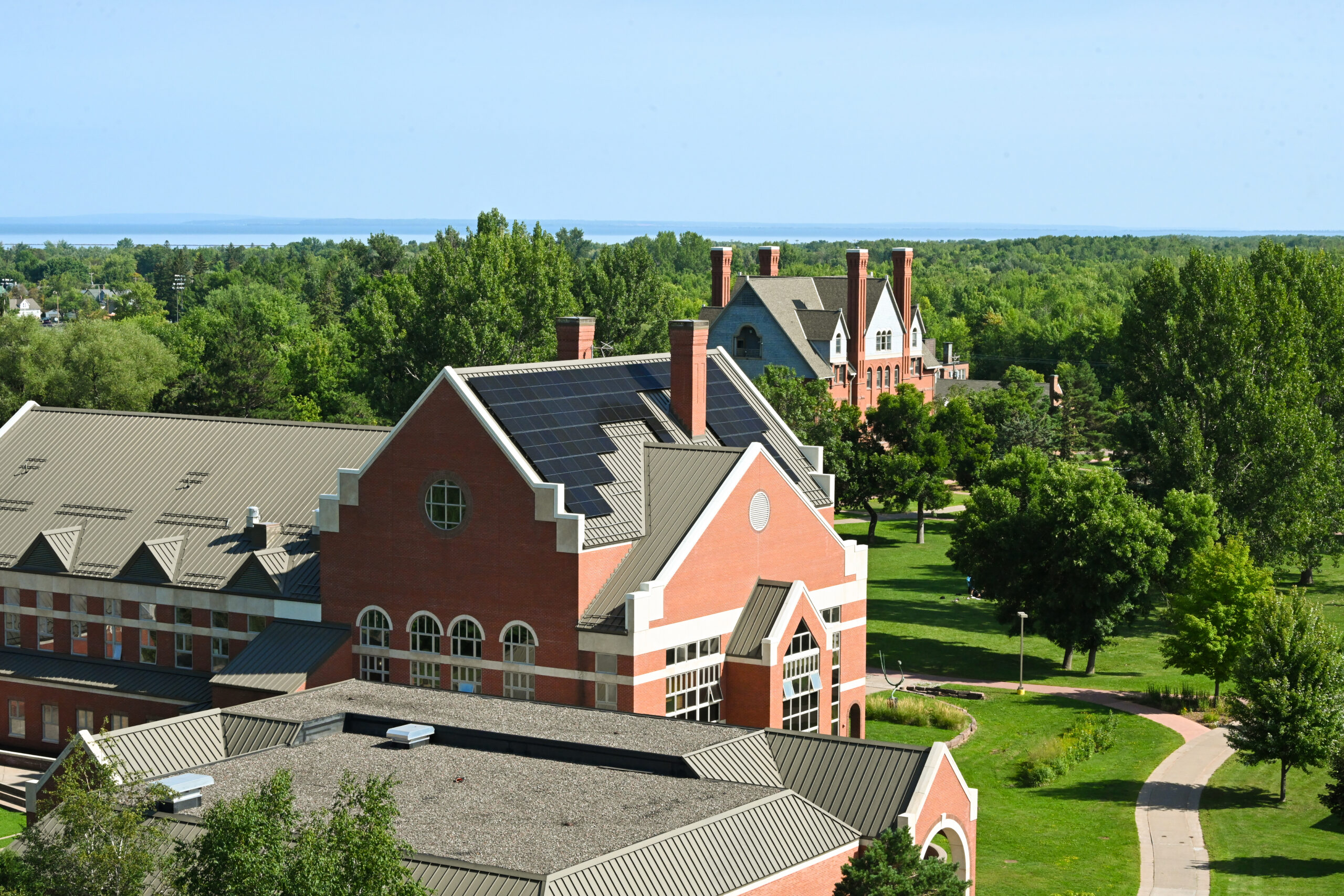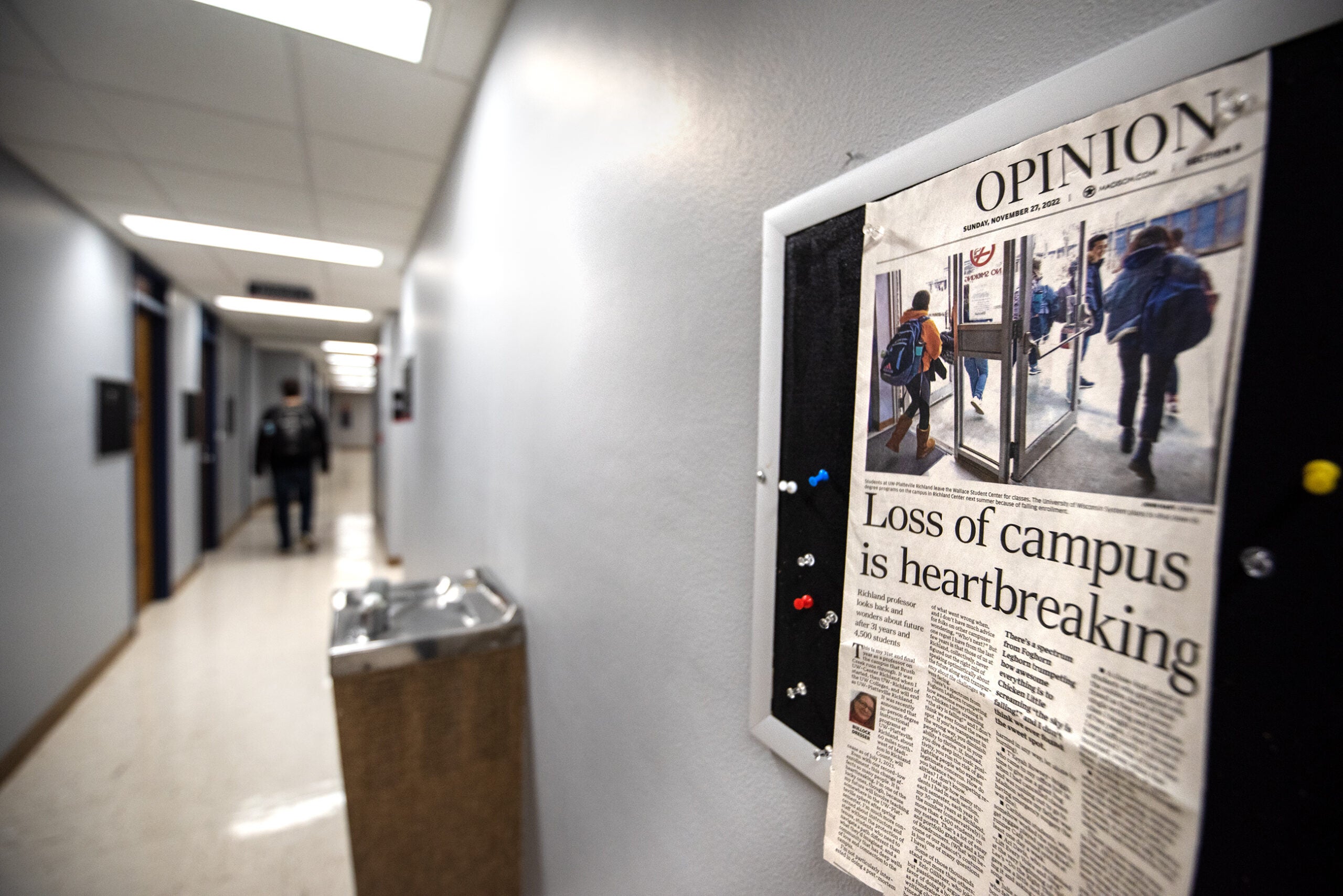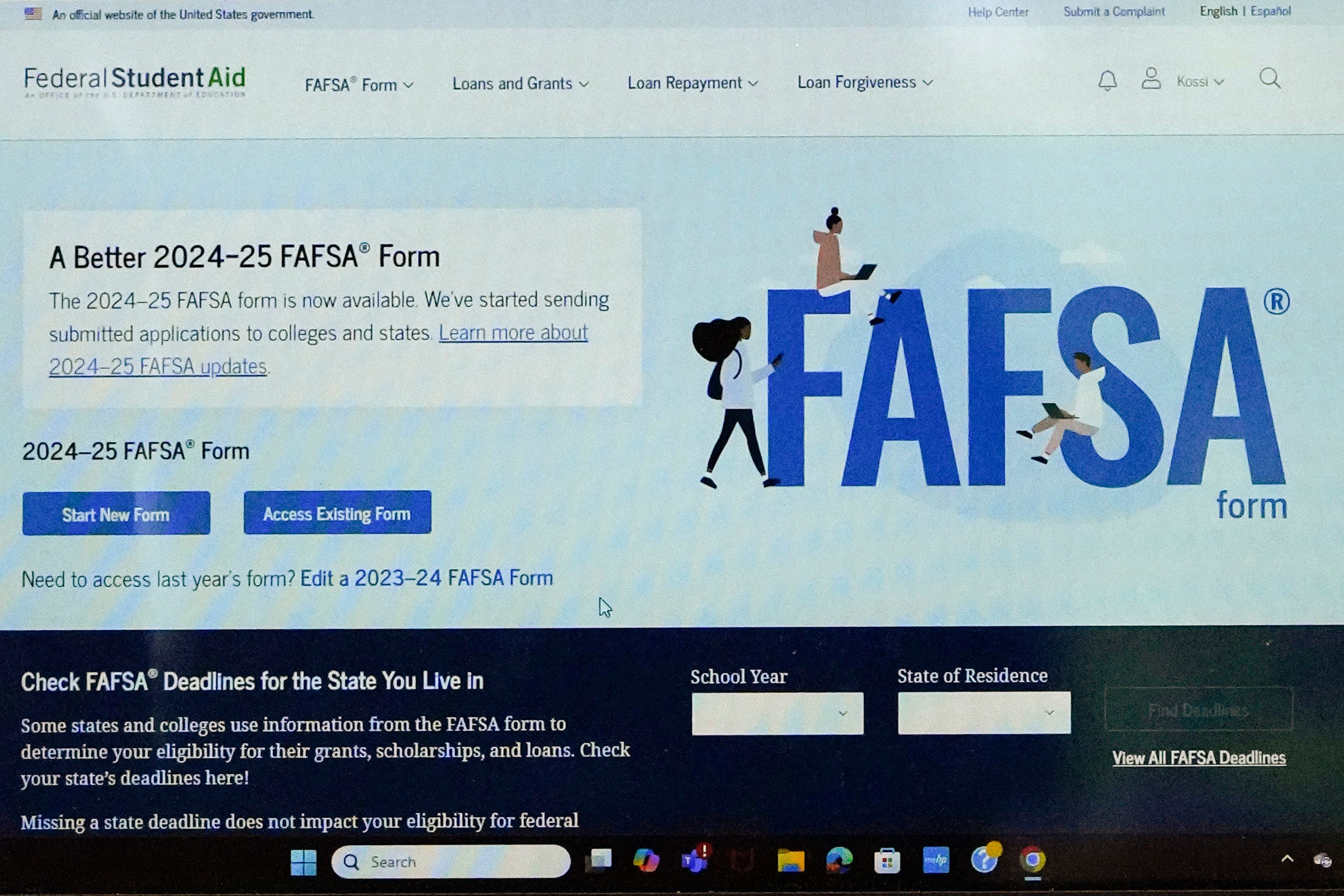After years of having plenty of students, colleges and universities across the country now have the opposite problem — dwindling enrollment leading to cost-cutting measures like buyouts and other changes.
Some changes are highly controversial.
Last month, the University of Wisconsin-Stevens Point dropped plans to scrap six majors to solve a budget deficit after backlash from students and staff.
Stay informed on the latest news
Sign up for WPR’s email newsletter.
It’s not just public schools adjusting to declining enrollment. In late February, Edgewood College, a private Catholic liberal arts school in Madison, offered buyouts to three dozen faculty members. Six accepted. The decision was first reported by Edgewood’s college newspaper.
“We wanted to provide opportunities for folks who might be interested in closing their career in a way that allowed us to recalibrate in a voluntary way first,” said Scott Flanagan, Edgewood’s president.
The Wisconsin Association of Independent Colleges and Universities has 24 members and president Rolf Wegenke said some actually have significant growth. Others are experiencing difficulties.
Private nonprofit colleges, he said, need to adapt to the marketplace by having the programs students want. For instance, to help address Wisconsin’s shortage of pharmacists, Concordia University in Mequon started a program to train them. The Medical College of Wisconsin also started a program.
Another private institute, the Milwaukee School of Engineering, is expanding its computer science program with an emphasis on artificial intelligence.
“That’s the cutting-edge thing and the place to be,” Wegenke said.
As NPR reported last year, colleges both public and private are seeking creative ways to make money like licensing logos. Niagra University puts its dorms on Airbnb during the summer.
Wisconsin is one of 34 states where enrollment declined for nearly all types of higher education institutions last spring, in part due to the state’s declining birth rate and a better post-recession economy.
The number of high school graduates in the state is expected to remain steady through 2026, according to UW-Madison’s Applied Population Lab. But the number of college-aged students nationally is predicted to fall by 15 percent between 2025 and 2029, said Nathan Grawe, an economist at Carleton College.
“We’re going through a transformation and we’re in a pretty substantial pivot,” said Flanagan. “But higher education is resilient.”
Wisconsin Public Radio, © Copyright 2025, Board of Regents of the University of Wisconsin System and Wisconsin Educational Communications Board.
